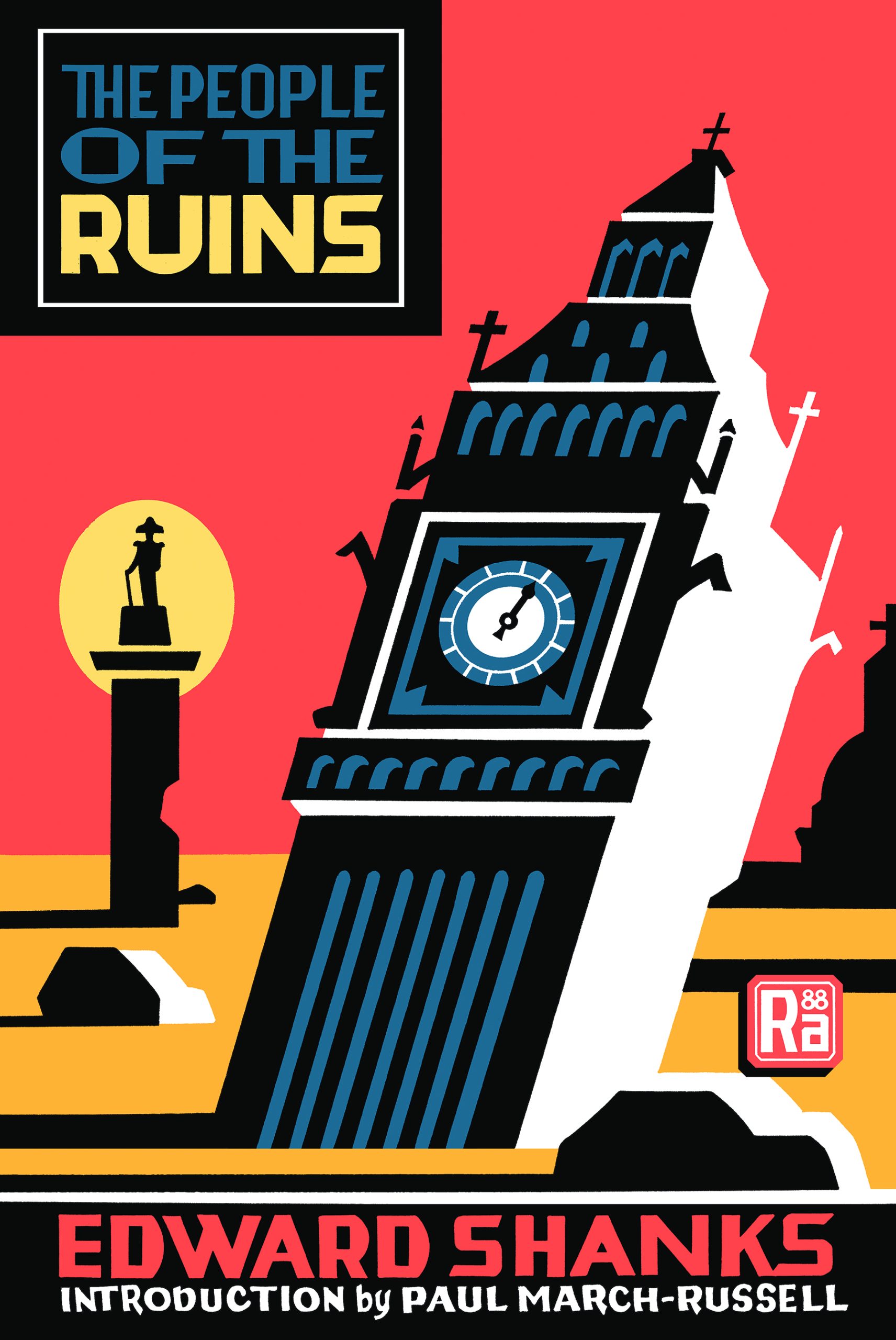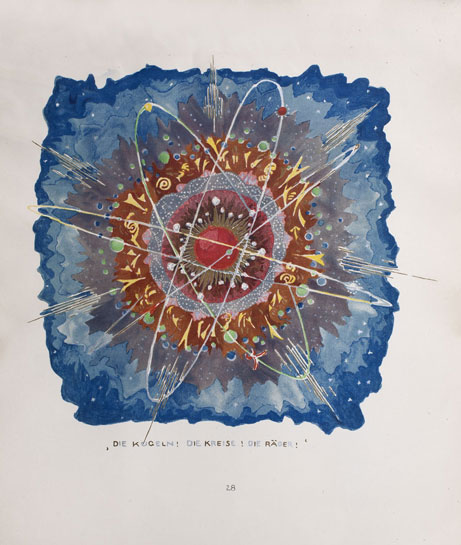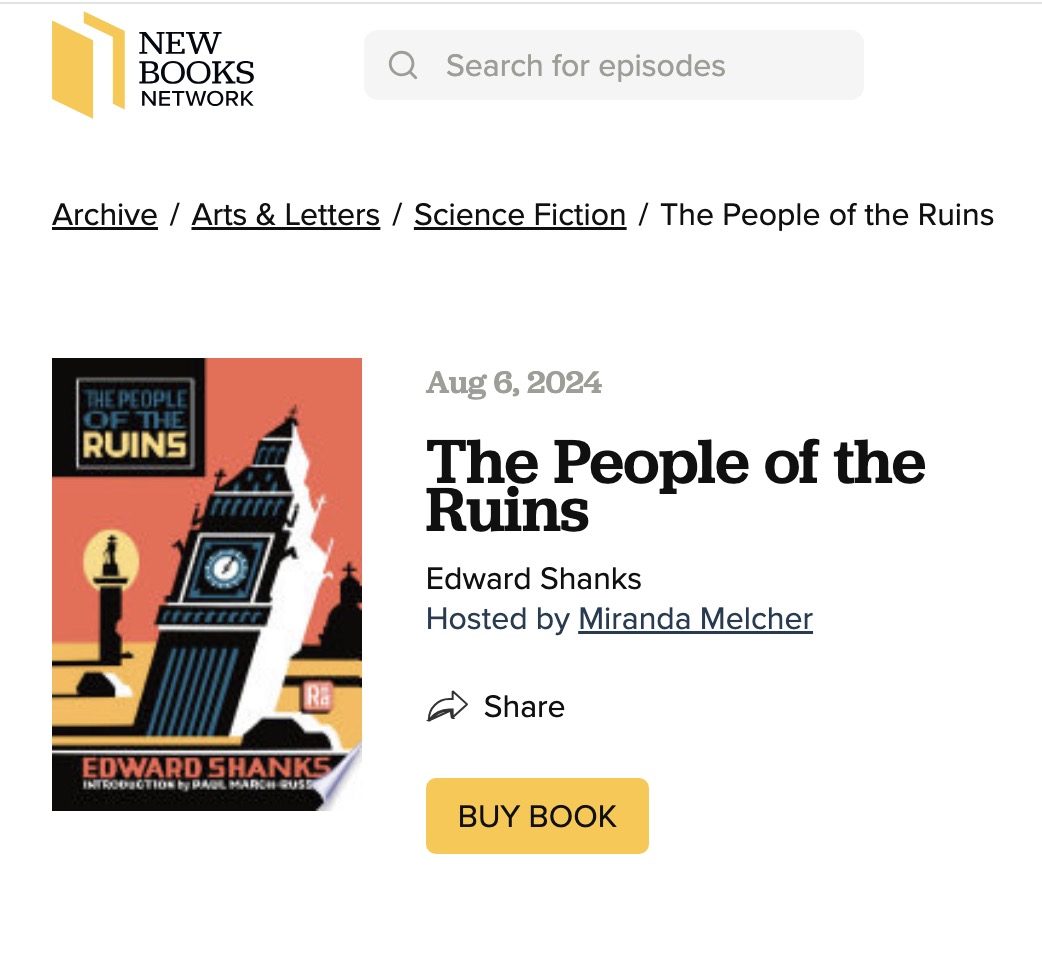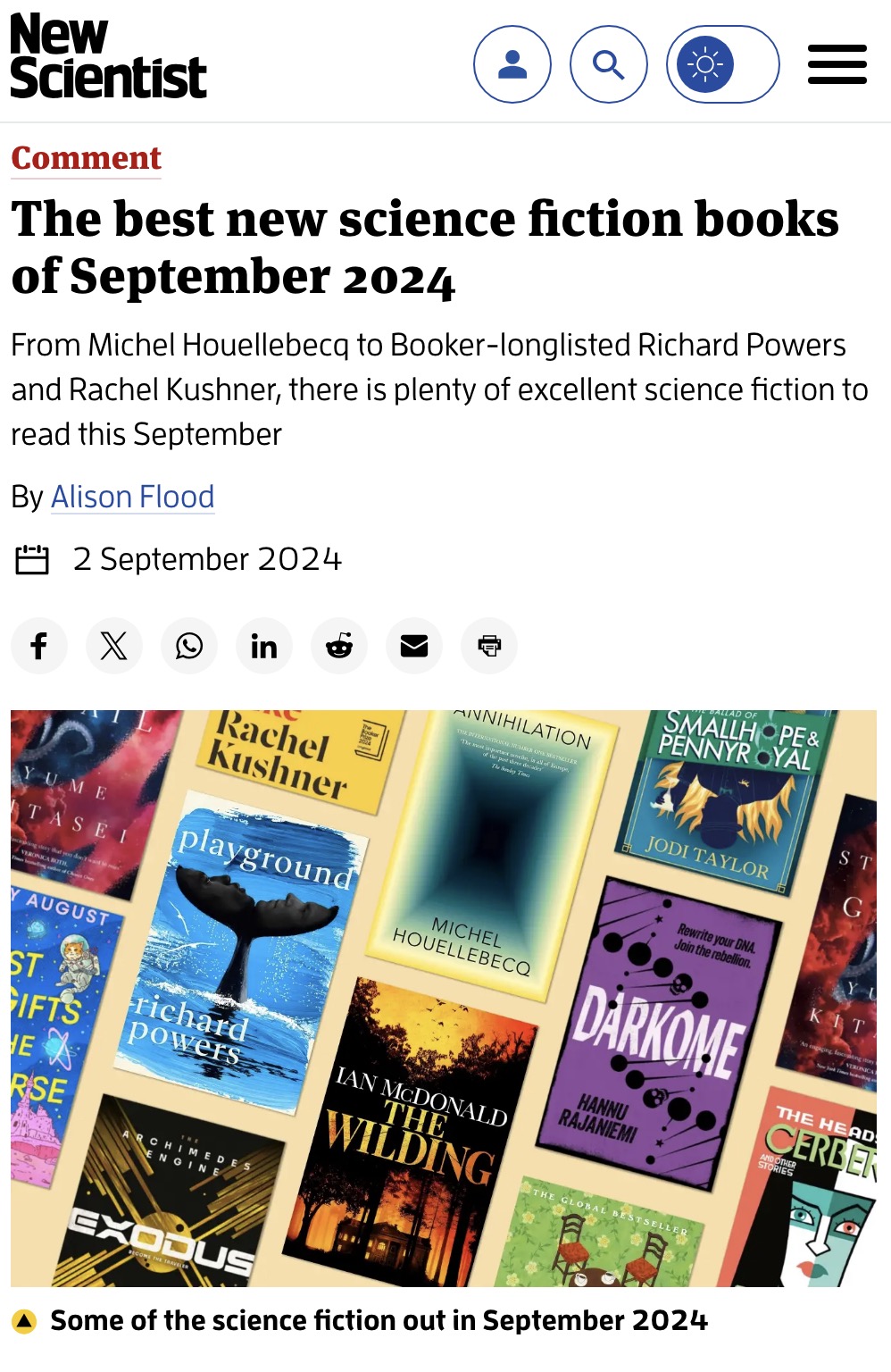RADIUM AGE 3Q2024
By:
September 28, 2024

Under the direction of HILOBROW’s Josh Glenn, in 2022 the MIT Press launched its RADIUM AGE series of proto-sf reissues from 1900–1935.
In these forgotten classics, sf readers will discover the origins of enduring tropes like robots (berserk or benevolent), tyrannical supermen, dystopias and apocalypses, sinister telepaths, and eco-catastrophes. With new contributions by historians, science journalists, and sf authors, the RADIUM AGE book series recontextualizes the breakthroughs and biases of these proto-sf pioneers, and charts the emergence of a burgeoning literary genre.
RADIUM AGE SERIES UPDATES: 2022 | 2023 | 2024 | 1Q2025 | 2Q2025 | 3Q2025 | 4Q2025. FULL SERIES INFO.
Below, please find updates on the RADIUM AGE project from 3Q2024.
During 3Q2024, the RADIUM AGE series published the following titles.
EDWARD SHANKS
Introduction by PAUL MARCH-RUSSELL
(August 6, 2024)

Trapped in a London laboratory during a worker uprising, a physicist and war veteran awakens 150 years later — on the eve of a new Dark Age!
In The People of the Ruins, Edward Shanks imagines England in the not-so-distant future as a neomedieval society whose inhabitants have forgotten how to build or operate machinery. Jeremy Tuft is a physics instructor and ex-artillery officer who is cryogenically frozen in his laboratory — only to emerge after a century and a half to a disquieting new era. Though at first Tuft is disconcerted by the failure of his own era’s smug doctrine of Progress, he eventually decides that he prefers the post-civilized life. But when northern English and Welsh tribes invade, Tuft must set about reinventing weapons of mass destruction.
One of the most critically acclaimed and popular post-war stories of its day, The People of the Ruins captured a feeling that was common among those who had fought and survived the War: haunted by trauma and guilt, its protagonist feels out of time and out of place, unsure of what is real or unreal. Shanks implies in this seminal work, as Paul March-Russell explains in the book’s introduction, that the political system was already corrupt before the story began, and that Bolshevism and anarchism, and the resulting civil wars, merely accelerated the world’s inevitable decline.
A satire of Wellsian techno-utopian novels, The People of the Ruins is a bold, entertaining, and moving post-apocalyptic novel contemporary readers won’t soon forget.
“An imaginative story of the future, keenly reasoned, exceptionally well told, and true to the great tradition…. At once a fine narrative novel and an inexorably logical picture of the bitter future being prepared by the advocates of class consciousness.” — The Living Age (1920)
“A penetrating tale of near-future disillusion that gazes upon a future made by World War I. Shanks, in 1920, is us, now.” — John Clute
Press for MITP’s edition of The People of the Ruins includes the following…
This new edition, complete with an introduction by Paul March-Russell, introduces new readers to Shanks’s tale of a present-day man who finds himself 150 years in the future where technology and society have regressed. — Reactor
PAUL MARCH-RUSSELL is editor of Foundation: The International Review of Science Fiction and co-founder of Gold SF, an intersectional feminist imprint published by Goldsmiths Press / MIT Press. His most recent book, co-edited with Andrew M. Butler, is Rendezvous with Arthur C. Clarke: Centenary Essays (Gylphi, 2022).
EDWARD SHANKS (1892–1953) was an English author, critic, and journalist. He was the editor of Granta just before serving in World War I and is perhaps best remembered today as a war poet. The People of the Ruins is his only science fiction novel.
Originally serialized (in Land & Water) in 1919–1920; first published in book form in 1920. Cover illustrated and designed by Seth. See this book at The MIT Press.
FRANCIS STEVENS
Edited & Introduced by LISA YASZEK
(September 17, 2024)

Exposed to a high-tech dust that can transport people from one dimension to another, three travelers must try to escape the totalitarian Philadelphia of 2118.
When three people in Philadelphia inhale dust developed by a scientist who has discovered parallel universes, they are transported into an interdimensional no-man’s land that is populated by supernatural beings. From there, they go on to an alternate-future version of Philadelphia — a frightening dystopian nation-state in which citizens are numbered, not named. How will they escape? In The Heads of Cerberus and Other Stories, introduced by Lisa Yaszek, you will find this world-bending story as well as five others written by Francis Stevens, the pseudonym of Gertrude Barrows Bennett, a pioneering science fiction and fantasy adventure writer from Minneapolis who made her literary debut at the precocious age of 17.
Often celebrated as “the woman who invented dark fantasy,” Bennett possessed incredible range; her groundbreaking stories — produced largely between 1904 and 1919 — suggest that she is better understood as the mother of modern genre fiction writ large. Bennett’s work has anticipated everything from the work of Philip K. Dick to Superman comics to The Hunger Games, making it as relevant now as it ever was.
“I am always delighted when I find Francis Stevens ‘booked for a thriller.’” — Reader’s letter to The Argosy (1919).
Re The Heads of Cerberus: “Those who insist on the close reasoning and the satirical wit of modern science fiction will find surprising amounts of both here.” — Damon Knight, In Search of Wonder
Re The Heads of Cerberus: “Perhaps the first science fantasy to use the alternate time-track, or parallel worlds, idea.” — Groff Conklin
“The stories in this collection are richly evocative of their time’s vision for our possible future, and their influence on the genre continues to broadly underpin the language by which contemporary works now explore today’s futures.” — Suzanne Palmer
Press for MITP’s edition of The Heads of Cerberus includes the following…
“Just my sort of thing, and I love rediscovering old sci-fi classics.” — Alison Flood, New Scientist
“An excellent way to rediscover an excellent writer.” — Transfer Orbit
FRANCIS STEVENS (Gertrude Barrows Bennett, 1884–1948) was the first American woman to publish widely in fantasy and science fiction. Her five short stories and seven longer works of fiction, all of which appeared in pulp magazines such as Argosy, All-Story Weekly, and Weird Tales, would influence everyone from H.P Lovecraft to C.L. Moore.
LISA YASZEK is Regents’ Professor of Science Fiction Studies in the School of Literature, Media, and Communication at Georgia Tech. Her books include Sisters of Tomorrow: The First Women of Science Fiction (2016) and The Future is Female! series (2018–present). A past president of the Science Fiction Research Association, Yaszek serves as an editor for the Library of America.
Originally published 1917–1923. Cover illustrated and designed by Seth. See this book at MIT Press.
During 3Q2024, Josh worked with the MITP editorial team to proof our Spring 2025 titles: J.D. Beresford’s The Hampdenshire Wonder (with a new introduction by Ted Chiang); and John Taine’s The Greatest Adventure (with a new introduction by S.L. Huang). Josh also advanced the series’ two Fall 2025 titles towards the production stream: Marietta Shaginyan’s Yankees in Petrograd (translated and introduced by Jill Roese); and Before Superman, an anthology of Radium Age superhuman stories (edited and introduced by Josh).
More info on these four titles, along with Seth’s cover illustrations, can be found here.
Here at HILOBROW, during 3Q2024 Josh continued to share his Radium Age-related research. For example…

Part four, “Structures of the Earth’s Crust,” moves from the reconstruction of mountain ranges to the reworking of the entire Earth with glass architecture, and expands to Part Five, “Star Structures,” in which stars and other cosmic entities are transformed to crystalline structures. In the last pages, glass architecture seems to implode upon itself, with an illustration of an atom-like structure, with the note: “THE SPHERES! THE CIRCLES! THE WHEELS!”
Via the series RADIUM AGE POETRY and RADIUM AGE ART, Josh shared proto-sf-adjacent poems and art works from the years 1900–1935.
Here’s the 3Q2024 RADIUM AGE ART lineup:
1918 | 1919 | 1920 | 1921 | 1922 | 1923 | 1924 | 1925 | 1926.
And here’s a sampling of the 3Q2024 RADIUM AGE POETRY lineup:
Wallace Stevens’ “RATIONALISTS, WEARING SQUARE HATS” | Herbert Read’s EQUATION | William Empson’s INVITATION TO JUNO | Kathleen Millay’s RELATIVITY | Aleksei Kruchenykh’s DYR BUL SHCYL | Filippo Tommaso Marinetti’s TO MY PEGASUS | Michael Roberts’ SIRIUS B | Osbert Sitwell’s THE END.
To see the full RADIUM AGE POETRY lineup, organized thematically, visit this page.

Here at HILOBROW, as we have been doing for a decade now, during 2Q2024 we serialized some of Josh’s favorite Radium Age proto-sf stories and novels. Here’s the lineup:
- Irene Clyde’s Beatrice the Sixteenth (1909)
- Van Tassel Sutphen’s The Doomsman (1905–1906)
- Charlotte Haldane’s Man’s World (1926)
- E. and H. Heron’s “The Story of the Grey House” (1898)
Here’s what they’re saying about the series:
“Joshua Glenn’s admirable Radium Age series [is] devoted to early- 20th-century science fiction and fantasy.” — Michael Dirda, Washington Post | “Neglected classics of early 20th-century sci-fi in spiffily designed paperback editions.” — The Financial Times | “New editions of a host of under-discussed classics of the genre.” — Tor.com | “The best proto-science fiction novels and stories from 1900 to 1935.” — The Washington Post. | “Long live the Radium Age.” — Scott Bradfield, Los Angeles Times | “Shows that ‘proto-sf’ was being published much more widely, alongside other kinds of fiction, in a world before it emerged as a genre and became ghettoised.” — BSFA Review. | “A huge effort to help define a new era of science fiction.” — Transfer Orbit | “It’s an attractive crusade. […] Glenn’s project is well suited to providing an organizing principle for an SF reprint line, to the point where I’m a little surprised that I can’t think of other similarly high-profile examples of reprint-as-critical-advocacy. ” — The Los Angeles Review of Books | “An excellent start at showcasing the strange wonders offered by the Radium Age.” — Maximum Shelf
Here’s a sampling of 3Q2024 series publicity:
- In July, the scientific journal Nature Physics reviewed The Inhumans and Other Stories. Excerpt: “Each story bursts with futuristic ideas and offers a glimpse of the excellence of Bengali literature. […] Readers who don’t speak Bengali will thoroughly enjoy this translation. It provides a rich mixture of storytelling and cultural diversity, all with a sci-fi twist. This collection isn’t just about bringing Bengali literature to an international readership — it is a chance to dive into imaginative stories from a different perspective. Whether one loves sci-fi or simply enjoys a good story, this anthology offers a rewarding read that crosses linguistic barriers.”
- Tor.com’s Reactor included The People of the Ruins on their list of Can’t Miss Indie Press Speculative Fiction for July and August 2024. Excerpt: “This new edition, complete with an introduction by Paul March-Russell, introduces new readers to Shanks’s tale of a present-day man who finds himself 150 years in the future where technology and society have regressed.”
- On August 6, Miranda Melcher at the New Books Network interviewed Paul March-Russell about our new edition of The People of the Ruins.
- “Just my sort of thing, and I love rediscovering old sci-fi classics.” — Alison Flood, writing about Francis Stevens’ The Heads of Cerberus collection in the September issue of the scientific journal New Scientist. Article titled “The best new science fiction books of September 2024.”
- “An excellent way to rediscover an excellent writer.” — Transfer Orbit, on The Heads of Cerberus collection



MORE RADIUM AGE SCI FI ON HILOBROW: RADIUM AGE SERIES from THE MIT PRESS: In-depth info on each book in the series; a sneak peek at what’s coming in the months ahead; the secret identity of the series’ advisory panel; and more. | RADIUM AGE: TIMELINE: Notes on proto-sf publications and related events from 1900–1935. | RADIUM AGE POETRY: Proto-sf and science-related poetry from 1900–1935. | RADIUM AGE 100: A list (now somewhat outdated) of Josh’s 100 favorite proto-sf novels from the genre’s emergent Radium Age | SISTERS OF THE RADIUM AGE: A resource compiled by Lisa Yaszek.


